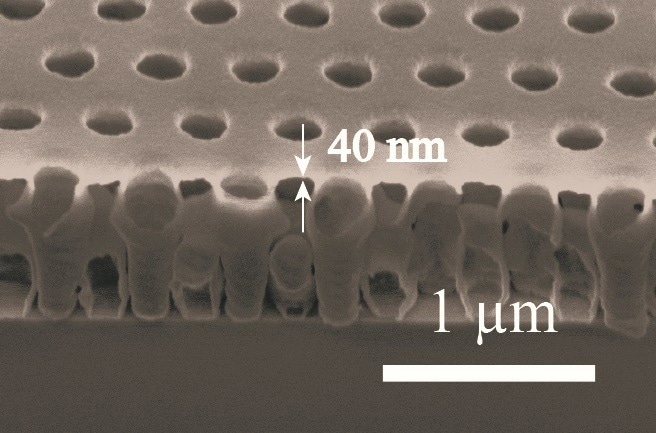Scientists from The University of Texas at Austin (UT Austin) and North Carolina State University (NC State) have discovered a distinctive property in multifaceted nanostructures for the first time, which has only been observed in basic nanostructures.

Image Credit: Cockrell School of Engineering, UT Austin
Furthermore, they have worked out the internal workings of the materials that render this property viable.
In a new article published recently in the Proceedings of the National Academy of Sciences, the scientists describe discovering these properties in oxide-based “nanolattices,” which are miniature, hollow materials similar to things such as sea sponges in structure.
This has been seen before in simple nanostructures, like a nanowire, which is about 1,000 times thinner than a hair. But this is the first time we've seen it in a 3D nanostructure.
Yong Zhu, Study Co-Lead Author and Professor, Department of Mechanical and Aerospace Engineering, NC State
The Research: The phenomenon under consideration is known as anelasticity. It concerns how materials react to stresses over some time. When the materials examined in this study were bent, minute defects moved gradually in reaction to the stress gradient. When the stress is emitted, the minute defects gradually return to their former positions, creating anelastic behavior.
The scientists also found that when these flaws move to and fro, they unravel energy dissipation features. This means they can disperse things such as pressure wave and vibration.
Why it Matters: The material could, in the future, act as a shock absorber, but since it is so thin and lightweight, it would be on an extremely small scale. The scientists state that it could be applied as part of chips for electronics or other integrated electronic systems.
You could potentially put this material under the semiconductor chips and protect them from outside impact or vibration.
Chih-Hao Chang, Associate Professor, Walker Department of Mechanical Engineering, UT Austin
What is Next: With anelastic characteristics being discovered, the following step is to regulate them. The team will scrutinize the geometry of the nanostructures and experiment with various loading scenarios to explore ways to enhance the anelastic performance for energy dissipation applications.
The Team: Chang and I-Te Chen, a former PhD student from UT Austin; and Zhu, Felipe Robles Poblete, and Abhijeet Bagal, both former PhD students from NC State.
The study received grants from the National Science Foundation.
Journal Reference:
Chen, I-Te., et al. (2022) Anelasticity in thin-shell nanolattices. Proceedings of the National Academy of Sciences. doi.org/10.1073/pnas.2201589119.